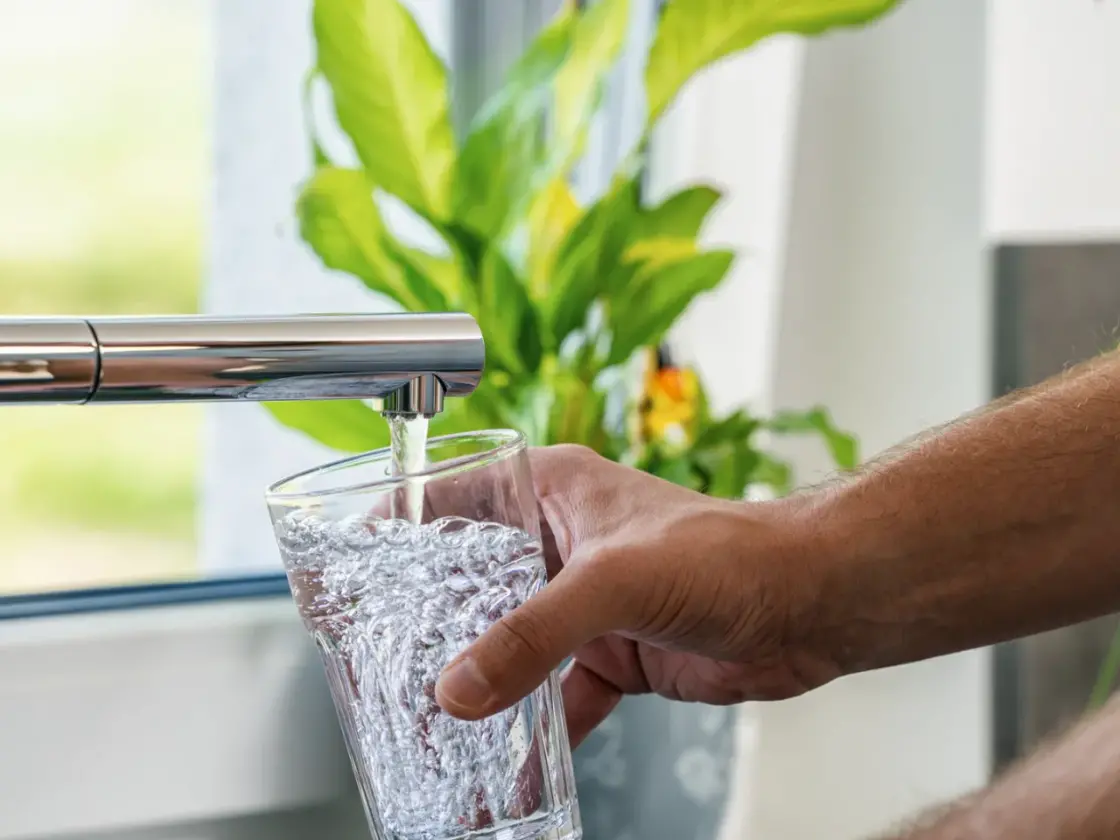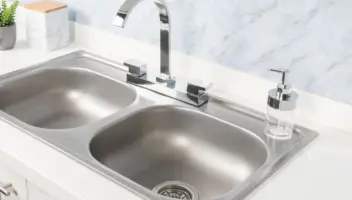How to Maintain Your Water Softener: 7 Essential Tips

Like most household appliances, water softeners do require a bit of maintenance. The good news is it’s minimal and relatively inexpensive. Although water softener maintenance is low-key, there are a few essential tips you’ll want to follow to ensure efficiency and optimal performance.
Before we dive into how to maintain your home water softener, let’s first break down what a water softener is and how it works.
What is a Water Softener?
A water softener is a water treatment system that removes minerals, such as calcium and magnesium, that cause hard water. One of the most common water quality issues homeowners face, hard water affects over 85% of households.
While hard water does not necessarily pose health risks to humans, it can wreak havoc on household plumbing and appliances. A few common problems caused by hard water include:
- Scale buildup, clogging pipes
- Water stains on dishes and clothes
- Rust and sediment buildup on appliances
- Dry skin and hair
How Does a Water Softener Work?
A common misconception about water softeners is that salt softens your water, but little resin beads filter out hard chemicals. A water softener removes calcium and magnesium from your water through ion exchange. Thousands of tiny resin beads filter out hard water chemicals during this process. The salt cleans the resin, allowing the system to cycle through the softening process. Monitoring your water softener for any maintenance issues is essential.
Here’s a quick breakdown of how a water-softening ion exchange process works:
- Water enters your home, from a city pipe or home well, and travels to your water softener.
- Resin beads (negatively charged) attract and hold onto hard water chemicals (positively charged), removing them from the water.
- The hardness is stripped out of the water as it passes through the mineral tank, and soft water flows into your home.
The plastic resin beads are charged with a sodium ion. The sodium ion is released when the resin beads “grab” the hard mineral ions. Water softeners add sodium to your water, but the levels typically do not negatively affect most people. But, people with high sodium levels may want to look into a salt-free water softener, or what’s known as a water conditioning system.
7 Water Softener Maintenance Tips
Water softeners can last years with little maintenance, but regular checks and routine maintenance can help ensure optimal performance. Here are a few steps you’ll want to add to your water softener maintenance checklist:
1. Get the Right Salt
A high-quality salt leaves less residue in the tank, reducing the chances of salt bridging and salt mushing. Three main grades of salt: rock, solar, and evaporated.
- Rock Salt – is the least expensive and leaves more insoluble minerals or impurities. Over time, it can dirty the tank, minimizing softening efficiency and mineral removal.
- Solar Salt – is more soluble than rock salt. It is generated by evaporated seawater and comes in pellet and crystal form.
- Evaporation Salt – is derived from a combination of mining and evaporation—the purest form of salt at 99.9% sodium chloride. It’s the highest quality and the most expensive.
Your manual will tell you if your home water softener system runs on granular, pellet, or block salt. Granular is the most popular because it dissolves the easiest.
2. Check the Salt Levels Regularly
Maintaining adequate salt levels is essential to the water-softening process. You should check your salt levels at least once a month. If you are low on salt, fill the tank about half-full with salt at least three inches above the water level. But you’ll want to make sure you’re following the softener manual.
3. Look For & Break Up Salt Bridges
A salt bridge is a hard crust or solid layer of salt that forms in the brine tank. It creates a blockage so the salt at the top cannot dissolve into the water below. This blockage is a problem because it prevents the softener from working.
Identifying a salt bridge is pretty straightforward. Look in the brine tank; if you see a crusty salt buildup, you have a salt bridge. Also, if you notice the salt tank is full, but you still notice signs of hard water, you can most likely have a salt bridge.
Fixing a salt bridge is a standard water softener maintenance. Using a broom, firmly press down and brush the top of the salt to break up any buildup. If you’re having difficulty, try pouring hot water into the tank to help break up salt.
And, if salt bridging persists, try using less salt, or allow salt levels to drop lower between refills.
4. Clean & Exercise the Valves
Routinely maintaining the venturi valve is essential to your water softener working properly. The valve and nozzle create suction to move brine from the brine tank to the resin tank during the regeneration cycle. This process can develop clogs with sand, sediment, and dirt.
To clean the valve:
- Unscrew the cover and soak internal parts in soapy water.
- Clean the valves at least twice yearly for smooth and efficient softening
- Follow the manual strictly when maintaining water softener valves to avoid damage.
5. Use a Water Softener Cleaner
Use a water softener cleaner every quarter. A water softener cleaner keeps the resin beads efficient and functional. Following the cleaner instructions, fill the brine tank and start a regeneration process.
6. Know How to Clean the Water Tank
Modern water softeners can go without cleaning for 5–10 years. You should only need to clean the water softener if your water has turned hard or basic maintenance has not resolved the issue in a couple of days. An older model will benefit from annual cleaning.
Water Softener Cleaning Process:
- Empty the tank: drain all water and remove the salt.
- Remove the brine grid from the base of the tank (if applicable).
- Clean with soapy water: mix lots of soap with one or two gallons of water. Dump in the tank and scrub with a long-handle brush.
- Rinse & Refill: dump out soapy water and thoroughly rinse with clean water. If there was a bridge in the tank, put it back. Refill the tank with water and salt as usual.
- Regenerate Tank: wait a few hours to give the salt time to dissolve, then regenerate the tank.
While the resin beads should recharge by the salt automatically, it’s a good idea to flush the resin bed every few months. Over time iron, silt, heavy metals, and other organic compounds can build up in the tank. Regular maintenance ensures clean resin will absorb as much calcium and magnesium as possible.
7. Have an Expert Check-Up Annually
While you can perform basic maintenance and upkeep yourself, some water softener issues are best left to a professional. Regular maintenance performed by a professional will keep your water softener system functioning optimally for years. Speak with your LHWS installer during installation about scheduling regular maintenance sessions and common water softener problems to monitor.
Benefits of Regular Maintenance
With routine cleaning and maintenance, your water softener will retain its ability to treat your water correctly. Ultimately, you will begin to see old hard water issues arise. Common problems you may experience include dry skin, slimy hair, and additional household cleaning.
Additionally, if the system’s valves are clogged or salt bridges buildup, you risk damaging your water softener system. Repair costs can add up and get quite expensive. Most repairs can be easily avoided by regularly maintaining your water softener.
In Conclusion
Many homes in the U.S. have hard water and can benefit from a water softener system. With periodic maintenance, your modern water softener can operate efficiently for over a decade. Get clean, great-tasting water with a custom water softener and conditioning system from Leaf Home Water Solutions. Contact us today to schedule a free consultation with a water expert.


